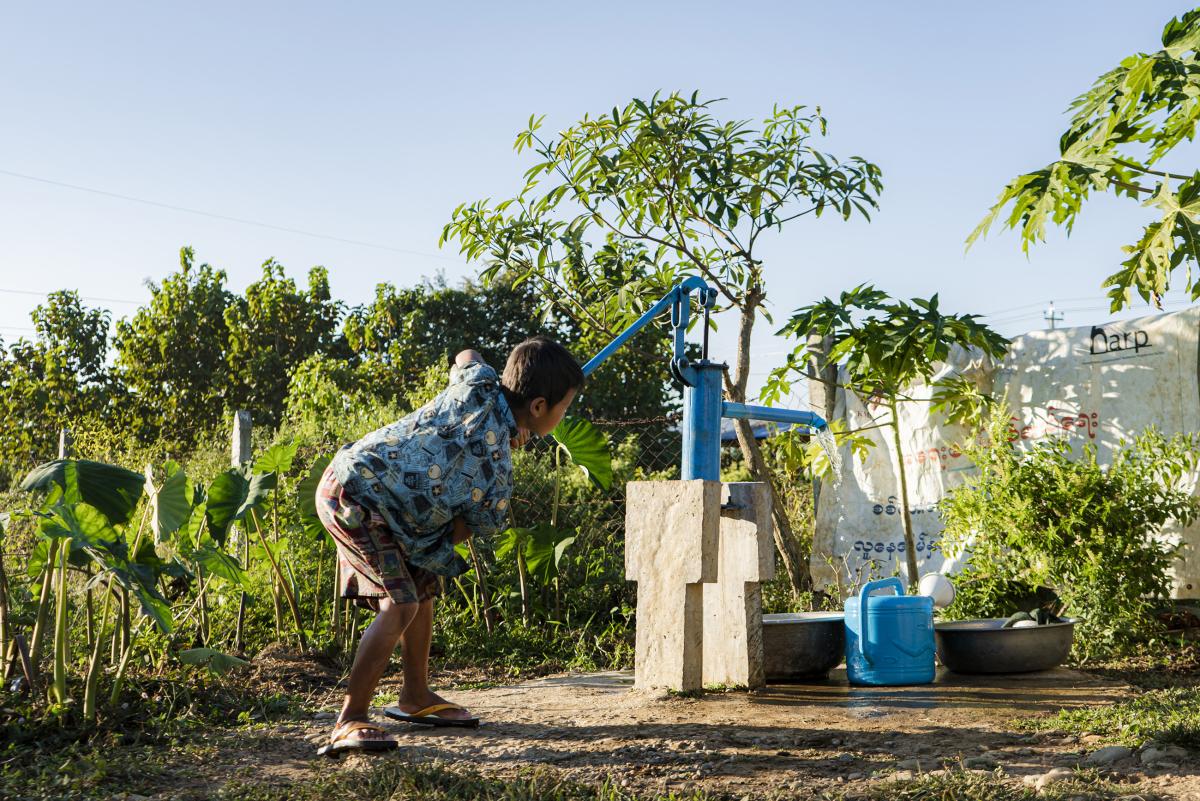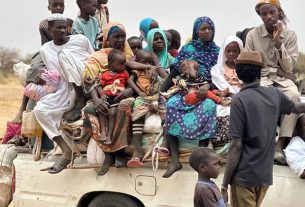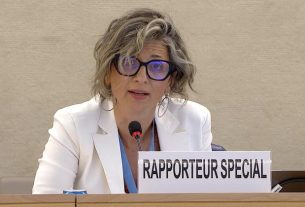In 2023, the EU and its Member States retained their position as one of the largest global humanitarian donors.
Over the past 12 months the international community has focused on the rising number of people at risk around the world due to multiple converging emergences: from health crises and natural hazards to conflicts like those in Ukraine and Gaza.
Disasters such as the earthquake in Haiti this June or forced displacements such as the refugee crisis following conflict in Myanmar has continued to pose significant challenges for humanitarian aid – and emphasises the need to broaden humanitarian attention to other parts of the world.
According to the latest UN figures, nearly 300 million people in 72 countries will require humanitarian assistance and protection in 2024. In the face of this challenge, the European Union remains resolute in its commitment to providing aid to people in need wherever they are.
This year, eight pivotal global crises demand close attention.
Palestine: forced displacement and famine risk
The humanitarian situation in the Gaza Strip has sharply deteriorated in recent months. This is due to the intensification of hostilities after the terrorist attack on Israel on 7 October.
The full-scale military operation, along with the siege on Gaza has taken the already dire humanitarian situation there to catastrophic levels.
Over 2 million people so far have been internally displaced due to intensified air strikes, enduring a situation of high insecurity and critical shortages of vital resources such as water, food, medicine, electricity, and fuel.
The dramatically high death toll among civilians, the limited amount of humanitarian supplies and restricted humanitarian access makes this one of the crises that require urgent and continued assistance.
Since 2000, the EU has mobilised more than €1.08 billion to enhance the humanitarian response for Palestinians and has already earmarked €125 million in humanitarian aid for this crisis for 2024.
Key fact: 3.1 million people in the Occupied Palestinian Territory currently need humanitarian assistance.
Ukraine: lives in danger and infrastructure destroyed
Since the Russian invasion of Ukraine in February 2022 heavy fighting has continued to endanger the lives of Ukrainian civilians, and cause severe damage to the country’s infrastructure: from housing to heating, water and electricity supplies.
Internal displacement is also causing significant challenges, with citizens being evacuated away from the front lines to new, unfamiliar surroundings. Most of these people have already seen their homes destroyed by shelling and may have experienced various wartime traumas including armed violence, family separation, looting or eviction.
With the war showing no sign of stopping, Ukraine’s civilian population is continues to endure a humanitarian catastrophe that is reaching new levels of suffering with each passing day.
The EU Civil Protection Mechanism is currently coordinating its largest ever operation in support of Ukraine. Since 2022 the EU has mobilised €785 million in humanitarian programs to help Ukrainians in need, and will continue to finance humanitarian aid efforts within the region.
Key fact: 40% of Ukraine’s population will need humanitarian assistance this year, according to the United Nations.
Syria: Destruction and disease
The earthquakes of February 2023 have brought destruction to Syria and increased the humanitarian needs of a country already hit by displacement, epidemics and a pandemic.
The number of people in need has risen considerably over the past 12 months, reaching 15.3 million so far. The situation is especially bad in Northwest Syria, where the earthquake has deepened food insecurities, diseases and stable sources of water.
As leading global donor of humanitarian assistance, EU has mobilised more than €30 billion in humanitarian, development, economic and stabilisation assistance over the past 12 years to support Syrians both inside the country and across the region.
Through the EU Civil Protection Mechanism, 16 European countries have delivered support to humanitarian partners on the ground via Lebanon and Türkiye and have provided civilians with the essential supplies they need.
Today, the crisis in Syria continues with close to 5.2 million registered Syrian refugees across the region.
Key fact: There has been a 40% rise in the number of people requiring assistance over the past 3 years.
Haiti: Expanding gang violence in an increasingly fragile country
In 2024, humanitarian needs in Haiti continue to increase amidst unprecedented levels of gang violence. According to UN figures, at least 3,960 people have been killed, 1,432 injured and 2,951 kidnapped in gang related violence this year alone. 3,056 cases of rape were reported from January to October 2023, an increase of 49% compared to 2022. More than 200,000 people have been forced to flee their homes.
An announced mission led by Kenya to restore security in the country has not yet been deployed, while criminal gangs’ activities are expanding into urban and rural areas. Today more than 5 million Haitians need humanitarian assistance, and over 4.3 million are suffering acute food insecurity. The number of children suffering from severe malnutrition in 2023 increased by 30% compared to 2022, with more than 115,600 cases in 2023.
This fragile context has forced millions of Haitian migrants to leave their country, making the perilous journey through the jungle of the Darién Gap between Panama and Colombia in a bid to reach the United States. Later, some are affected by forced repatriation.
Since 1994 the EU has allocated €490 million in humanitarian aid. Last year the EU gave €18.5 million to address the needs of Haiti’s most vulnerable communities.
Key fact: around 4.3 million Haitians are currently suffering acute food insecurity.
Africa: diseases, disasters and displacement crises
The continent of Africa remains high on the world media’s watchlist as the source of some of the worst crises of recent years.
In Sudan, the outbreak of the conflict in April 2023 has resulted in one of the biggest displacement crises globally, with over 6 million people so far internally displaced due to the conflict between the Sudanese Armed Forces (SAF) and the Rapid Support Forces (RSF). As of 2024, half of the population in Sudan – close to 25 million people – are in need of humanitarian aid. This is just one example of the unprecedented humanitarian needs in the region, and is affecting neighbouring countries including Chad, South Sudan, Ethiopia and Egypt.
In areas like the Greater Horn of Africa, more than 49 million people are experiencing acute food insecurity and over 19 million people are displaced by conflict, drought, and flooding.
Diseases also pose a threat to people across the region, including cholera outbreaks in four countries, measles and malaria outbreaks in seven countries, and dengue fever in Ethiopia.
The EU allocated €600,000 in order to contribute to tackle potential cholera outbreaks in South Sudan in 2023. €1 million was also allocated to Ethiopia to to help fight a cholera epidemic.
Key fact: there are more than 6.1 million people with limited access to essential healthcare services in South Sudan.
Myanmar: Escalating conflict increases humanitarian needs
Since the military takeover in 2021, the humanitarian situation in Myanmar has sadly deteriorated. Last autumn saw an escalation of the conflict, forcing more than 600,000 people to flee their homes in less than 3 months and reaching a total of 2.6 million across the country. Approximately a third of the country’s population, 18.6 million people, are currently in need of humanitarian assistance, and some 25% of the population are facing hunger.
Some 600,000 stateless Rohingya remain in Myanmar, where they lack fundamental rights. Meanwhile, 1 million Rohingya refugees who fled persecution live in neighbouring Bangladesh. For this community conditions remain dire, with serious security concerns and no clear prospect for return to their home in Myanmar.
In 2023, the EU allocated about €32.8 million to address the immediate needs of the most vulnerable civilians in Myanmar. In addition, last year the EU provided over €38.5 million in humanitarian aid, disaster preparedness and emergency funding within Bangladesh. Within this sum, over €28 million contributed to supporting Rohingya refugees.
As conditions in the refugee camps worsen, more and more Rohingya refugees embark on dangerous sea journeys to try and reach neighbouring countries like Indonesia and Malaysia. The EU has so far allocated €3 million to respond to the increasing protection needs of refugees throughout the region.
Key fact: Myanmar has the fifth largest number of people in need of humanitarian assistance globally.
Extreme weather events: wildfires and floods
Extreme weather events such as wildfires and floods are more becoming more frequent and extreme across the world due to the worsening climate crisis. On 6 August 2023, the EU Civil Protection Mechanism broke a grim record when for the first time it was activated twice within the same day, in response to flooding across two thirds of Slovenia and wildfires in Cyprus.
2023’s challenging wildfire season included the largest wildfire on record in the EU, burning over 76,000 hectares of land in Evros, Greece.
In response the EU Civil Protection Mechanism deployed 27 firefighting airplanes, 1 helicopter, and around 2000 personnel. This massive effort was a testament to the solidarity of the EU member states; with Bulgaria, Cyprus, Czech Republic, Croatia, France, Germany, Greece, Italy, Malta, Poland, Portugal, Romania, Serbia, Slovakia, Spain, and Sweden all contributing to the firefighting and relief efforts.
This past year’s extreme wildfire season only highlights the increasing complexity of natural hazards and the simultaneity of extreme weather events across Europe and beyond.
Earthquakes
2023 saw multiple earthquakes around the world.
On 6 February 2023 Türkiye and Syria suffered a series of catastrophic earthquakes, resulting in thousands of deaths, extensive destruction and a worsening situation for many of the already vulnerable refugees in southeast Türkiye. This was one of the strongest earthquakes in the region in more than 100 years and the biggest earthquake of 2023.
In September a 6.8 magnitude earthquake last September struck Morocco, leaving many civilians injured or homeless.
Then in October, a series of earthquakes in Afghanistan left thousands dead or injured. In response the EU allocated over €2.5 million in funding for humanitarian partners on the ground, as well as delivering vital supplies through 3 Humanitarian Air Bridge flights.
Finally, in November 2023, following a devastating earthquake in Nepal, the EU approved a €2 million aid package to bring relief to affected communities.



